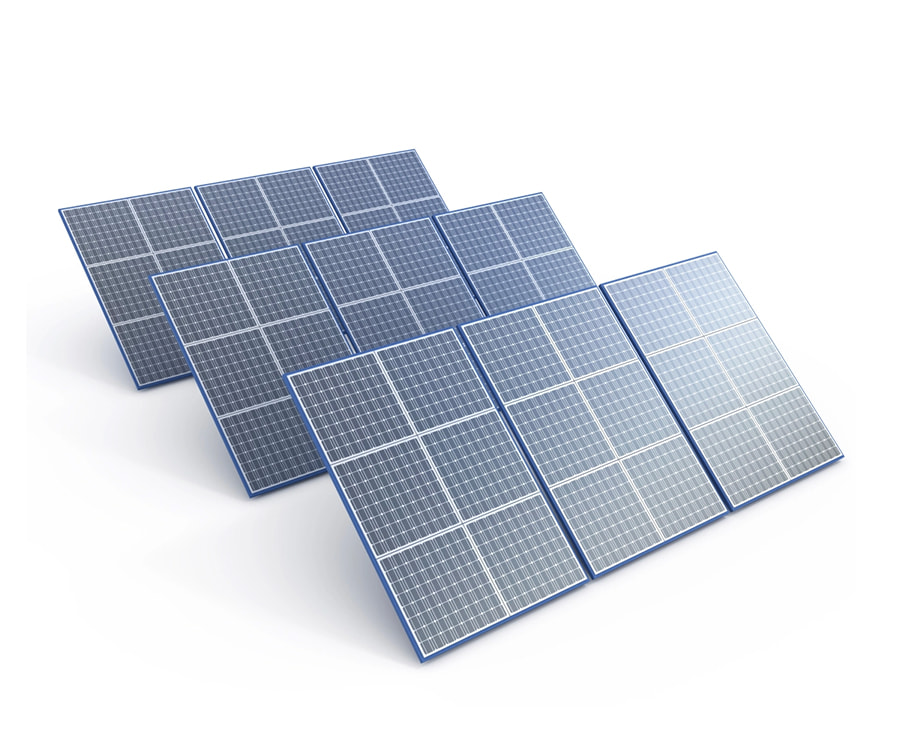How is Photovoltaic Module Cover Glass Engineered for Optimal Light Transmission?
Photovoltaic module cover glass is engineered for optimal light transmission through various design and material considerations. The goal is to maximize the amount of sunlight reaching the solar cells, ensuring efficient energy conversion. Several key engineering aspects contribute to achieving optimal light transmission:
Anti-Reflective Coatings: Cover glass often incorporates anti-reflective coatings that are carefully engineered to minimize reflection losses. These coatings are designed to reduce the amount of sunlight that bounces off the surface of the glass, allowing more light to penetrate and reach the solar cells.
Optical Clarity: The cover glass is manufactured to provide high optical clarity. This involves minimizing impurities, bubbles, or other defects in the glass that could scatter or absorb light. High optical clarity ensures that sunlight can pass through the glass with minimal distortion, optimizing the light transmission to the solar cells.
Low Iron Content: Photovoltaic cover glass is typically manufactured with low iron content. Iron impurities can absorb sunlight, reducing the amount of light that reaches the solar cells. By minimizing iron content, the cover glass enhances light transmission and improves the overall performance of the photovoltaic module.
Uniform Thickness: The glass is engineered to have a uniform thickness across its surface. Consistent thickness helps maintain optical clarity and ensures even light distribution to the solar cells. Variations in thickness could cause light scattering or refraction, leading to efficiency losses.
UV Protection: Photovoltaic cover glass may incorporate UV-blocking properties to protect the underlying solar cells from the harmful effects of ultraviolet radiation. This protection helps maintain the efficiency and longevity of the solar cells over time.
Durable and Weather-Resistant: Engineering considerations for durability and weather resistance are crucial. The cover glass must withstand environmental factors such as rain, snow, temperature variations, and humidity without degrading. Durable materials and coatings contribute to the long-term effectiveness of the cover glass in optimizing light transmission.
Resistance to Scratches and Abrasion: To maintain optimal light transmission, the cover glass is engineered to be resistant to scratches and abrasion. This resistance ensures that the surface remains smooth and free from damage that could scatter or block incoming sunlight.
Surface Texturing: Some cover glass may undergo surface texturing processes to enhance light trapping and reduce reflection. Textured surfaces can redirect light that would otherwise be reflected back into the solar cells, improving overall light absorption and transmission.
Coating Uniformity: Uniform application of anti-reflective coatings is essential. Consistency in coating thickness and quality ensures that the entire surface of the cover glass benefits from anti-reflective properties, contributing to uniform light transmission.
Compatibility with Frame Design: The engineering of cover glass takes into account the compatibility with the overall frame design of the photovoltaic module. Proper integration with frames and encapsulants ensures structural stability and optimal alignment for efficient light capture.
How Does Photovoltaic Module Cover Glass Impact the Aesthetics and Design of Solar Installations?
Photovoltaic module cover glass plays a crucial role in shaping the aesthetics and design of solar installations. Its impact extends beyond functionality to influence the visual appeal and integration of solar panels into various settings.
The transparency of cover glass ensures that sunlight can efficiently reach the solar cells while maintaining visibility of the underlying modules. This transparency is particularly important in applications like building-integrated photovoltaics (BIPV), where solar modules become an integral part of architectural designs without compromising aesthetics.
Anti-reflective coatings on the cover glass reduce glare and reflections, contributing to a visually comfortable appearance. This reduction in glare is essential in areas where excessive reflection could affect neighboring buildings or create discomfort for observers, enhancing the overall visual harmony of the solar installation.
The compatibility of cover glass with the frame and structure of solar panels is carefully engineered for a seamless and cohesive appearance. The color and finish of the frame, along with the design of the cover glass, contribute to the overall aesthetic harmony of the solar module.
Customizable color and tint options provide flexibility in design, allowing solar installations to align with specific preferences or blend with the surrounding environment. This customization adds an element of personalization to solar panels, making them adaptable to diverse architectural settings.
In applications like BIPV, cover glass technology enables architectural integration, allowing solar panels to be seamlessly incorporated into facades, skylights, or windows. This integration contributes to the overall design language of the building, enhancing its aesthetic appeal.
Surface texturing processes on cover glass enhance light trapping and reduce reflection, not only improving energy conversion efficiency but also adding a textured visual element to the solar panels. This texturing contributes to a more dynamic and interesting design, especially in installations where visual aesthetics are a key consideration.
The flexibility and thin-film options offered by some cover glass technologies allow for the creation of curved or flexible solar modules. This flexibility in design enables the integration of solar panels into unconventional or irregular surfaces, expanding the possibilities for creative and innovative solar installations.
The durability of cover glass materials contributes to the long-term aesthetics of solar installations. Materials resistant to degradation over time ensure that the solar modules maintain their appearance and functionality throughout their operational life.
Uniformity in cover glass design and manufacturing is crucial for a consistent and cohesive appearance across an array of solar modules. Consistency in appearance is particularly important in large-scale solar installations, contributing to a visually pleasing and organized overall design.








